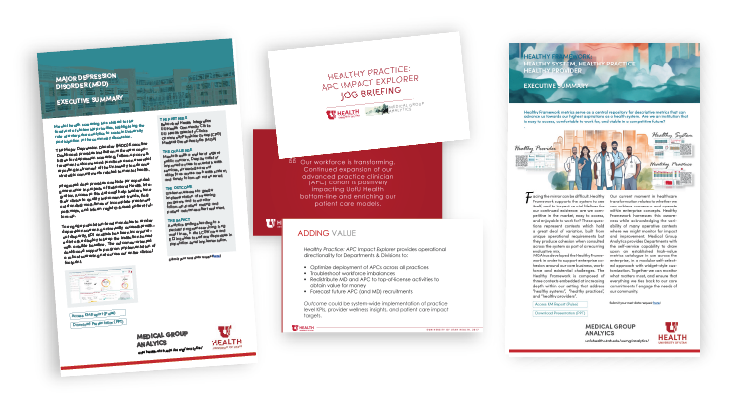
Practice Management

Practice Management
Featured Projects
Our work focuses on optimizing clinical practices by providing data-driven insights that help departments and divisions enhance efficiency, streamline workflows, and improve patient care delivery.
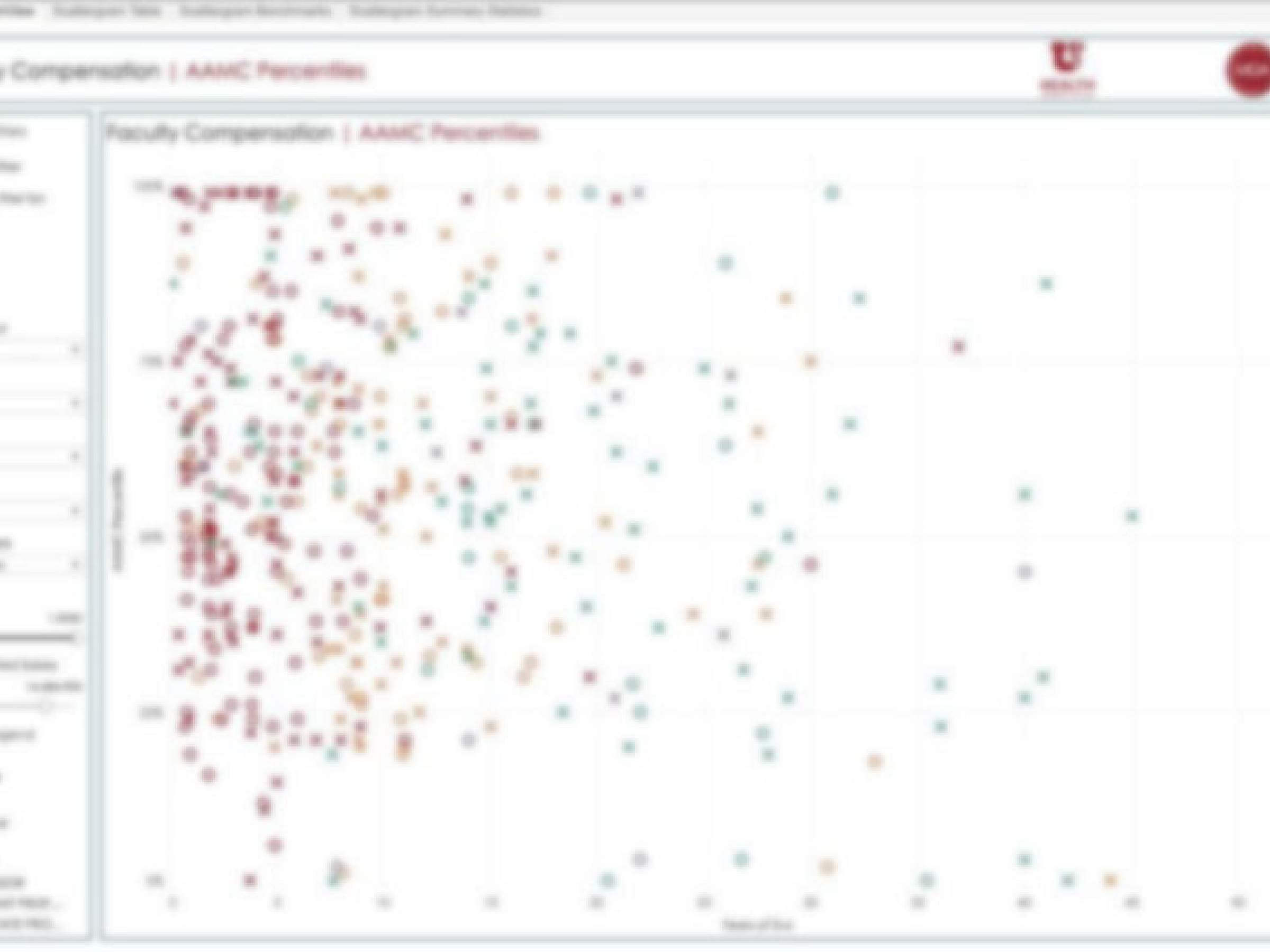
A core challenge with compensation models for University of Utah Health faculty is that no single model can universally meet every need. MGA has provided a AAMC benchmark view for SOM Finance and Administration to curate their review of compensation practices for faculty compared to national benchmarks. These data set the stage for positive outcomes such as addressing pay gaps, disparities, and ensuring fair compensation.
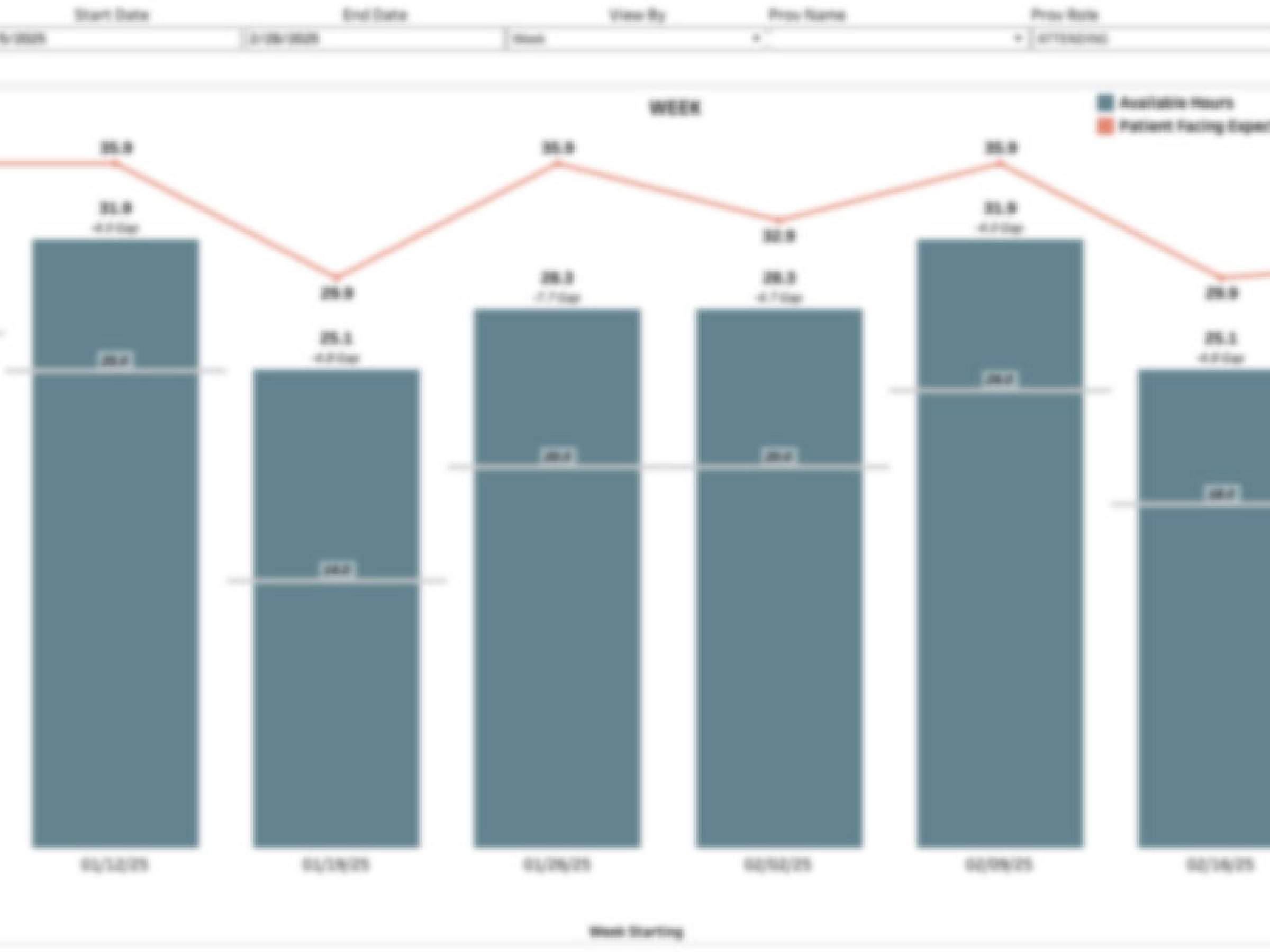
Our Provider Contractual Time Analysis project offers a comprehensive assessment of provider time obligations across different departments. By comparing contractual commitments with actual patient-facing time—both scheduled and available—this analysis provides valuable insights for providers and administrators. It enables departments to monitor how much time is allocated in provider templates, assess booking trends, and align scheduling with contractual expectations. This data-driven approach supports template optimization, helping departments improve capacity planning, enhance efficiency, and ensure alignment with patient care demands.
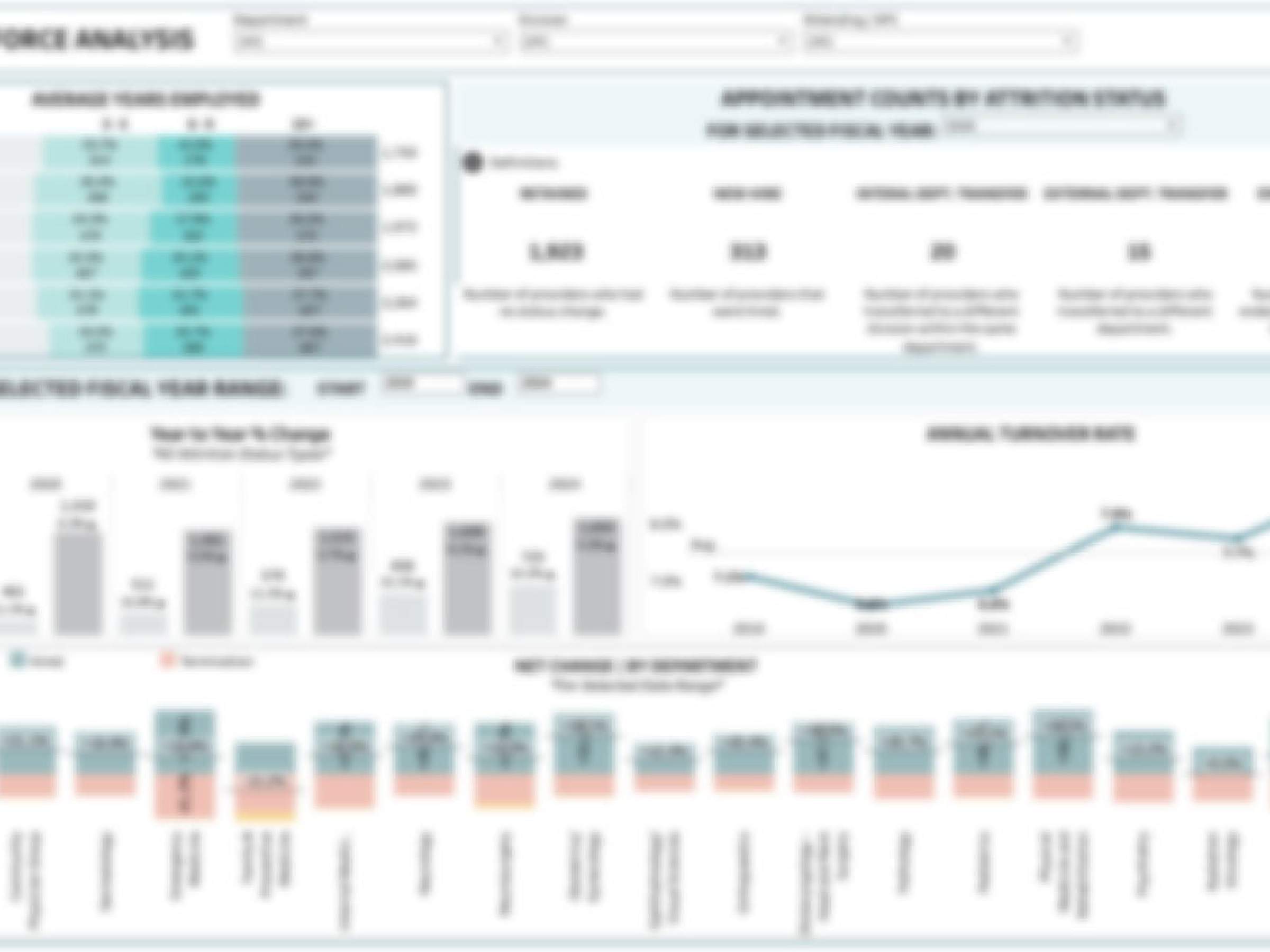
Our SOM Workforce Analysis project leverages HR data to analyze key workforce trends among physicians and advanced practice clinicians. By curating and interpreting critical metrics, this analysis helps identify potential turnover hotspots, departmental growth patterns, and workforce distribution trends. These insights empower leadership to make data-driven decisions, proactively address staffing challenges, and strategically plan for future workforce needs, ensuring stability and growth across the organization.
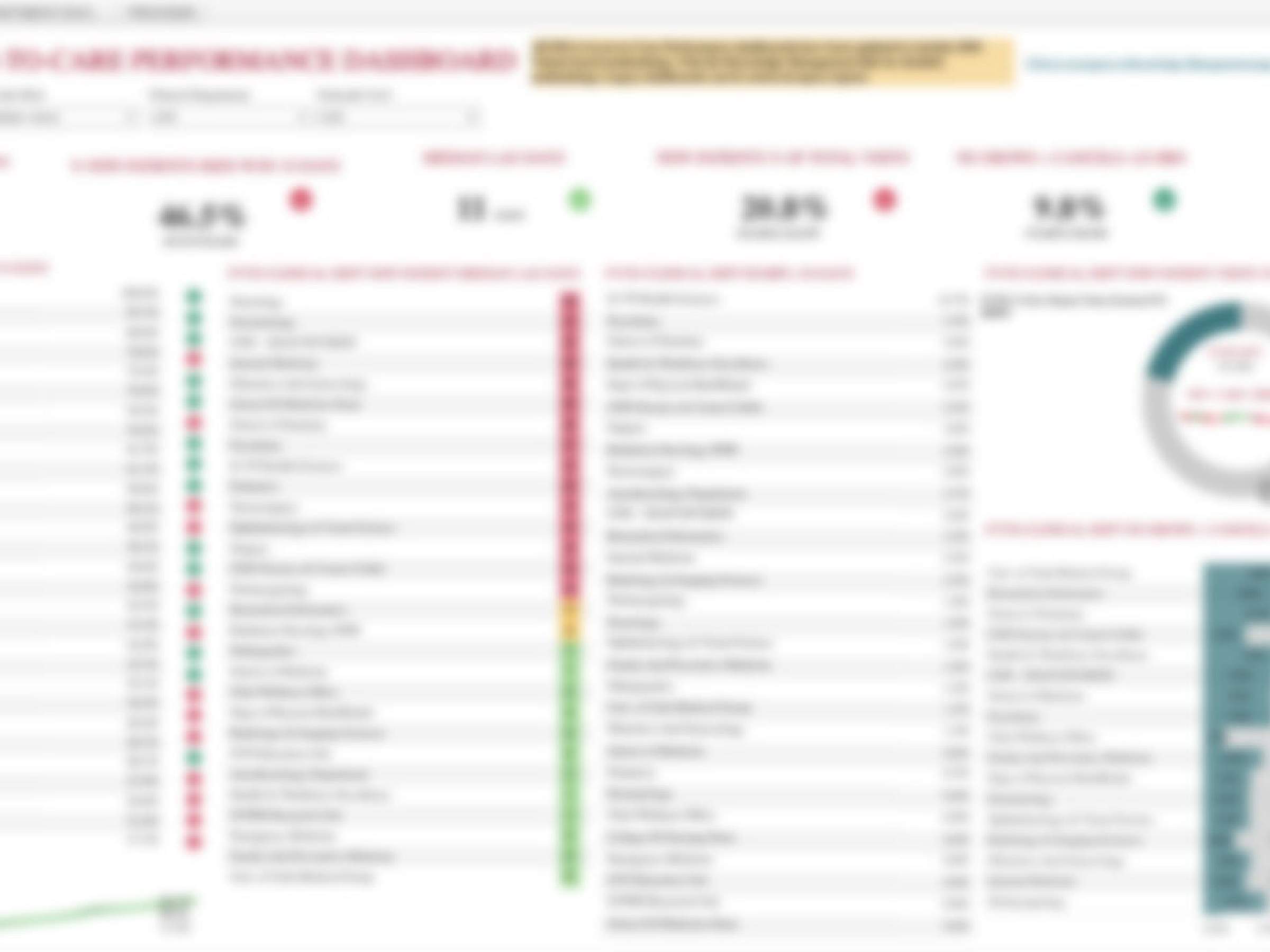
University of Utah Health uses standardized enterprise measure definitions for all key access-to-care indicators. We also deploy these as a source for comparisons between U Health and other academic institutions using the Vizient-AAMC benchmarking framework. MGA’s collaboration with the Enterprise Data Warehouse to replicate the Vizient methodology within local data systems supports close monitoring of our competitive performance and the pace behind our commitment to core values.
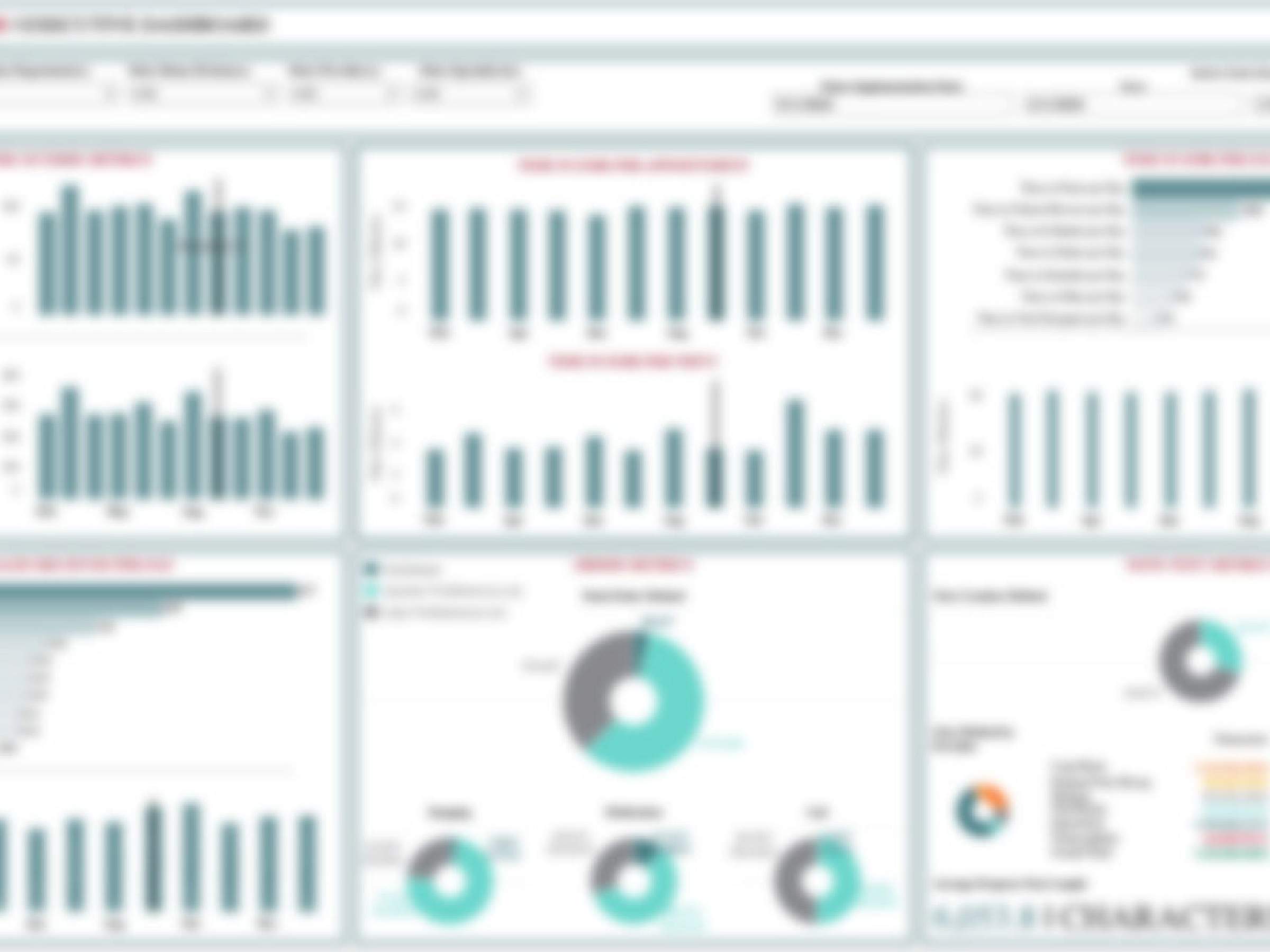
Certain Electronic Medical Record (EMR) behaviors may be more closely associated with provider burnout than others. To gain deeper insights into how and when providers interact with the EMR, MGA has operationalized a set of Epic™-developed metrics. The Healthy Provider: Signal Dashboard identifies opportunities to reduce administrative burden within the EMR, with a particular focus on after-hours usage. Key metrics include total time spent in the EMR per day, volume of in-basket messages received, and other engagement indicators. By leveraging these insights, MGA supports strategies to enhance provider efficiency and well-being.

Working with Medical Group Analytics is impacting my ability to deliver on core responsibilities I've been hired to perform: remove barriers, guide & mentor, and create a larger economy of capabilities within my service line.
Did you know?
Medical Group Analytics maintains an archive of its past work. Keeping careful record of project details and milestones forms our practice of Knowledge Management.
We view collections of our past work as a bridge to future conversations with customers who see a match between MGA and their evolving analytics questions.
MGA's archives located on the University intranet "PULSE" are an important means for customers to review our wrap-around analytics capabilities at University of Utah Health. We hope you’ll select Medical Group Analytics for your future work.









